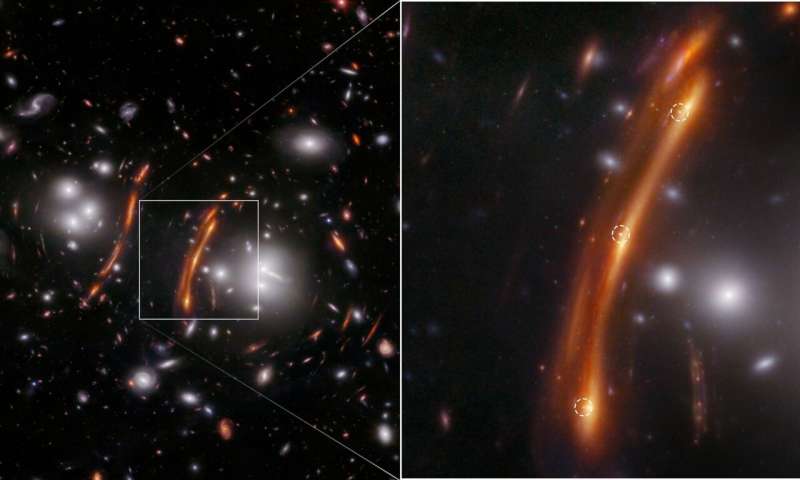The Hubble tension, a long-standing discrepancy in the rate of cosmic expansion, has been a puzzling challenge in modern cosmology. A new study using gravitational lensing provides an independent measurement of the Hubble constant, shedding light on this enigma. This article explores the implications of this groundbreaking discovery and the ongoing quest to understand the true nature of the universe’s expansion. Hubble constant, cosmic microwave background, gravitational lensing.

Unraveling the Hubble Tension
The Hubble constant is a fundamental cosmological parameter and over the years it has been among the most controversial. This constant is important because it determines the rate of cosmic expansion, which in turn tells us how old, dense and structured the Universe is.
Observational measurements of the Hubble constant have long disagreed with one another, giving rise to the so-called “Hubble tension. On the one hand, measurements of the cosmic microwave background put a number at around 67-68 (km/s)/Mpc; on the other distant supernova observations and the cosmic distance ladder point to something closer to 73-75 (km/s)/Mpc. That discrepancy has confounded cosmologists, since the two methods are believed to be equally accurate.
From gravitational lensing to an entirely new vantage point
To alleviate this, astronomers have been trying to find a way around using the original measurements of the Hubble constant assuming it was measured having know all appropriate cosmological paramters (eg. cosmic microwave background) and distance ladder. One method of doing so is through gravitational lensing.
When a massive object, like a galaxy cluster, warps the path of light emitted from a distant source (i.e. gravitational lensing) As a result, many copies (images) of the same object can be created because it will take as many light paths as necessary including those due to gravitational lensing. At that moment, the researchers can compare when its lensed images brighten up to determine how far they are and calculate the Hubble constant in the end.
An Unprecedented Detection of SN H0pe
This new research, published on the arXivpreprint server, uses this technique of gravitational lensing to gauge the Hubble constant. They trained their sights on SN H0pe, a Type Ia supernova and one of the most distant ever detected.
SN H0pe has three lensed images, produced by the more nearby galaxy cluster G165. When the researchers looked at the timing, observed brightness and path calculations of these lensed images, they found that a value of Hubble constant is between 70-83 (km/s)/Mpc. This measurement is less uncertain than those reported earlier with this method, but it exhibits more uncertainty overall and agrees well with the traditional cosmic distance ladder approach, while also strongly contrasting with the value derived from the cosmic microwave background.
This new finding doesn’t solve the Hubble tension, but it does add an extra wrinkle to what was already a confusing mystery. It indicates the contradiction may go beyond a lack of observation and there will not be an easy observational way out. The true nature of cosmic expansion — as well as the rules of how it all plays out on a physics level — is now something that cosmologists will have to unwind.
